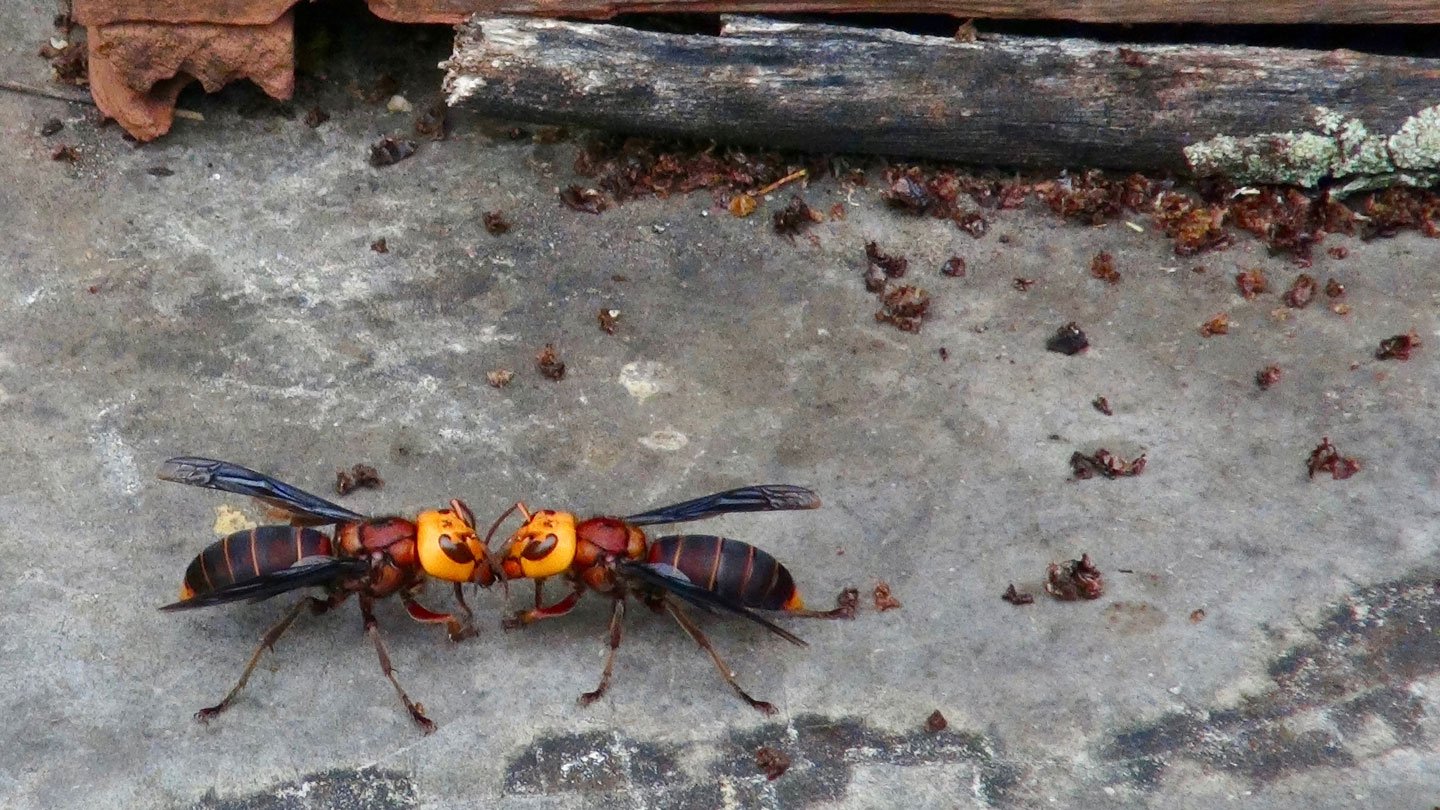Male Asian big hornets captivated by the chemical indicators of a ready-to-mate queen might at some point discover themselves caught in a lure as a substitute.
In a brand new examine, scientists recognized three chemical compounds within the intercourse pheromone of Asian big hornet queens. When traps with these chemical compounds had been positioned close to the hornets’ nests in China — a part of their native vary — the traps ensnared hundreds of males however no different bugs, researchers report March 14 in Present Biology.
The discovering is a step towards designing pheromone traps, a typical device to watch or management insect populations, for these hornets, says James Nieh, a behavioral ecologist on the College of California, San Diego.
Beginning in 2019, nests housing Asian big hornets (Vespa mandarinia) — nicknamed “homicide hornets” for his or her behavior of feasting on honeybees — have popped up in just a few locations in western North America (SN: 5/29/20). Research trace that the bugs might unfold throughout japanese Washington, Oregon and British Columbia in Canada, and scientists have launched efforts to manage the invasion (SN: 10/1/20). The Washington State Division of Agriculture even encourages state residents to assist lure the hornets utilizing plastic bottles, orange juice and rice cooking wine.
North American researchers have mounted efforts to trace down Asian big hornet nests — like this one collected in its native territory in Kunming, China — in an effort to manage the invasive insect’s unfold.Dong Shihao
However potent insect traps ought to present “one thing that will ideally be irresistible,” Nieh says.
Utilizing fuel chromatography and mass spectrometry, Nieh and colleagues recognized hexanoic acid, octanoic acid and decanoic acid as key elements of a queen’s intercourse pheromone. Within the lab, male hornet antennae reacted — an indication of attraction — to every of the pure compounds in addition to a mix of the three. The group then crafted traps utilizing a sticky board, a dummy male hornet and a vial crammed with every of the person pure acids, a mixture of the three or extracts from the pheromone-secreting glands from a queen.
The male hornets had a transparent desire for the queen extracts, although the remoted chemical compounds in addition to mixes of the three trapped many hornets as properly. In a single check, for instance, extracts from only one gland trapped about 500 male hornets — greater than twice the quantity trapped by full concentrations of the three-chemical cocktail, which itself carried out on par with two of the undiluted remoted chemical compounds. Management traps missing the extracts or pure chemical compounds, in the meantime, attracted few males.
As a result of male Asian big hornets had been most interested in the pheromone gland chemical compounds in contrast with the person acids or the combination, which means there are in all probability different compounds within the pheromone that would make traps much more efficient, Nieh says.

Signal Up For the Newest from Science Information
Headlines and summaries of the most recent Science Information articles, delivered to your inbox
Thanks for signing up!
There was an issue signing you up.
It’s unclear whether or not the traps work over longer distances. However hornet queens’ intercourse pheromones in all probability lure males from farther away to keep away from “incestuous interbreeding,” Nieh says. The traps may very well be most helpful in late fall through the hornets’ mating season.
The discovering is “necessary work,” says Timothy Lawrence, an apiculturist at Washington State College in Coupeville, who wasn’t concerned with the examine. Discovering a method to entice employee hornets, not simply males searching for a mate, could be nice, however the outcomes are nonetheless a “main step ahead,” he says. “The earlier we discover a dependable method to entice males and discover nests, the higher.”



